Ebola basics: What you need to know
- Published
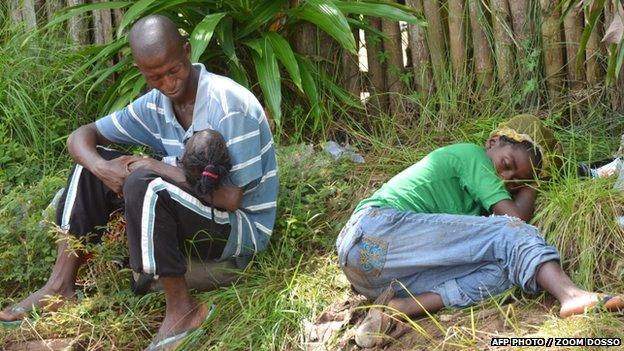
A sick family waits for treatment for Ebola on the roadside in the Liberian capital Monrovia
The Ebola virus has claimed around 7,000 lives during the current epidemic in West Africa, the largest outbreak since the virus was discovered nearly 40 years ago.
According to the World Health Organization (WHO), more than 18,000 people have been infected during the outbreak.
What is Ebola?
The current outbreak is the deadliest since Ebola was discovered in 1976
Ebola is a serious infectious illness which often proves fatal.
The virus, which is thought to have originated in fruit bats, was first detected in 1976 in an outbreak near the Ebola River in what is now the Democratic Republic of Congo.

How is the disease caught and spread?
People are infected when they have direct contact through broken skin, or the mouth and nose, with the blood, vomit, faeces or bodily fluids of someone with Ebola.
The virus can be present in urine and semen too.
Infection may also occur through direct contact with contaminated bedding, clothing and surfaces - but only through broken skin.
It is still unclear how long the virus exists on surfaces but there is some evidence to suggest it can last up to six days. Bleach and chlorine can kill Ebola.
The disease is not airborne, like flu. Very close direct contact with an infected person is required for the virus to be passed to another person.
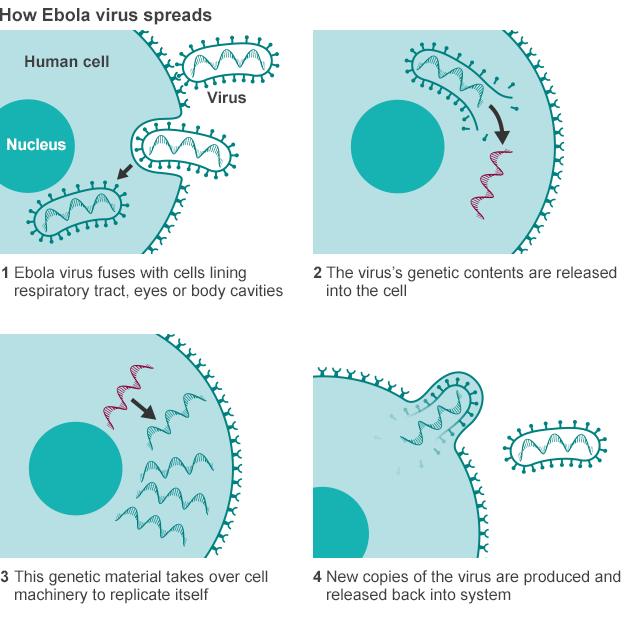
It can take up anything from two to 21 days for humans with the virus to show symptoms.
People are not infectious until the symptoms develop.
People are infectious as long as their blood and secretions contain the virus - in some cases, up to seven weeks after they recover.

What are the symptoms?

The Ebola virus causes a range of painful and debilitating symptoms
The early symptoms are a sudden fever, muscle pain, fatigue, headache and sore throat.
This is followed by vomiting, diarrhoea, a rash and bleeding - both internal and external - which can be seen in the gums, eyes, nose and in the stools.
Patients tend to die from dehydration and multiple organ failure.

How is it treated?
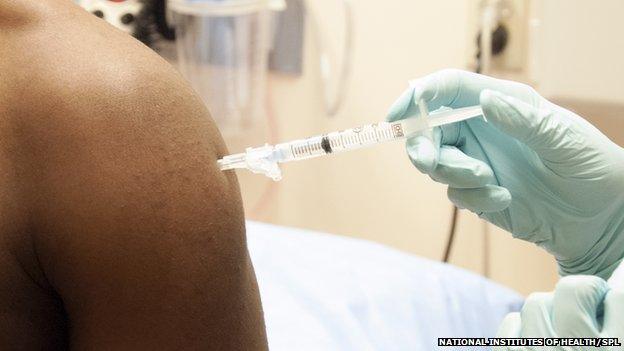
Ebola vaccines are being tested on humans in trials in the US and the UK
There is no proven cure for Ebola.
Severely ill patients need to be rehydrated quickly using intravenous fluids. They should be isolated from other people and given intensive care by medical experts.
Potential vaccines are being tested. If the trials are successful they would be used to protect healthcare workers first.
Experimental drugs such as ZMapp have also been used, but their effectiveness has not been proved.
Blood products from survivors are also being tried as a potential therapy.
The medical charity Medecins Sans Frontieres (MSF) says this outbreak comes from the deadliest and most aggressive strain of the virus.
It is not known which factors allow some people to recover while most succumb but experts say early treatment is key.

Who is at risk?
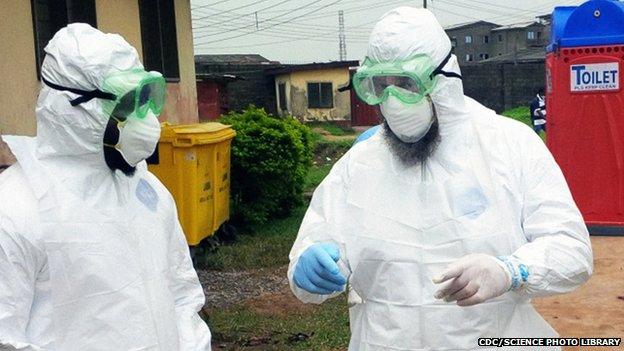
Doctors wearing protective equipment outside an Ebola treatment unit in Nigeria
Anyone in close contact with Ebola patients is at risk.
Healthcare workers are using protective clothing such as full-body suits and goggles, but hundreds have still died.
Family members of patients are also at risk. In West African funerals, it is traditional for mourners to have direct contact with the body of the dead person, washing and embracing them before burial.
But the Ebola virus is still dangerous and present in the body after death. Prompt and safe burials are now being urged.
MSF has been trying to make people aware of how their treatment of dead relatives might pose a risk to themselves. However, it is a very difficult message to get across.

What precautions can be taken?
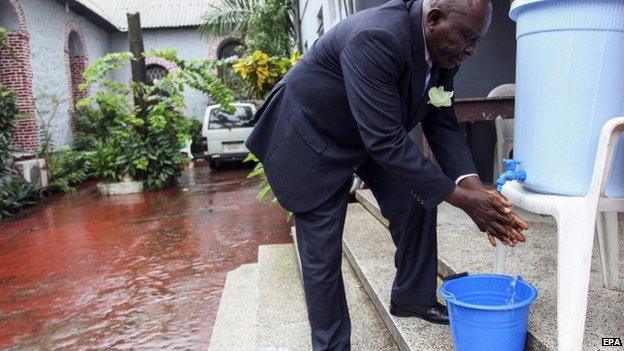
Washing hands and improving hygiene is one of the best ways to fight the virus
Avoid contact with Ebola patients and their bodily fluids, the WHO advises. Do not touch anything - such as shared towels - which could have become contaminated in a public place.
Carers should wear gloves and protective equipment, such as masks, and wash their hands regularly.
The WHO also warns against consuming raw bushmeat and any contact with infected bats or monkeys and apes. Fruit bats in particular are considered a delicacy in the area of Guinea where the outbreak started.
In March, Liberia's health minister advised people to stop having sex, in addition to existing advice not to shake hands or kiss. The WHO says men can still transmit the virus through their semen for up to seven weeks after recovering from Ebola.

Where is Ebola a problem?
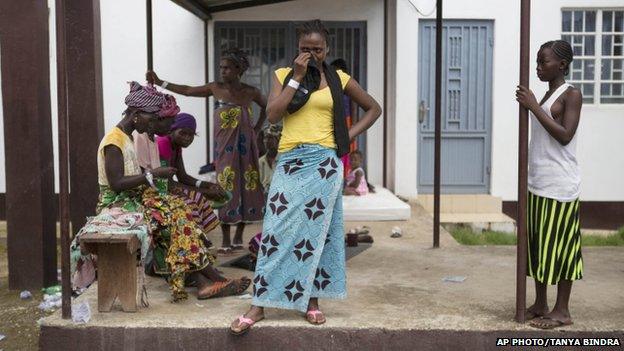
A woman suspected of having Ebola virus cries outside a hospital in Sierra Leone.
Guinea, Liberia and Sierra Leone in West Africa are the countries worst affected by this outbreak, which was identified as Ebola in March 2014.
It started in Guinea, which has never before been affected, and quickly spread to urban areas.
From Nzerekore, a remote area of south-eastern Guinea, the virus spread to the capital, Conakry, and neighbouring Liberia and Sierra Leone.
Nigeria and Senegal have confirmed a small number of cases, and the US has had three confirmed cases.
In October, a nurse in Spain became the first person to contract the virus outside of West Africa.
Ebola deaths since 1976


Why is this outbreak particularly bad?
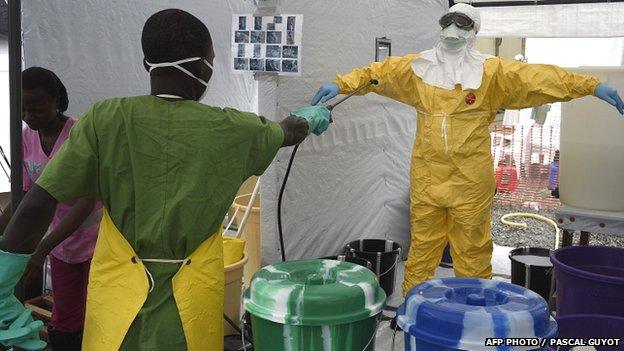
Health workers have been brought into affected countries to help treat patients with Ebola
The virus has taken hold in major urban areas this time, allowing it to spread more easily.
The countries most severely affected by the disease have weak health systems. They are short of qualified doctors and nurses, and lack the appropriate equipment and resources to combat the virus.
As a result, this is the largest and most complex Ebola outbreak since the virus was discovered.
There have been more cases and deaths in this one than all other outbreaks combined.